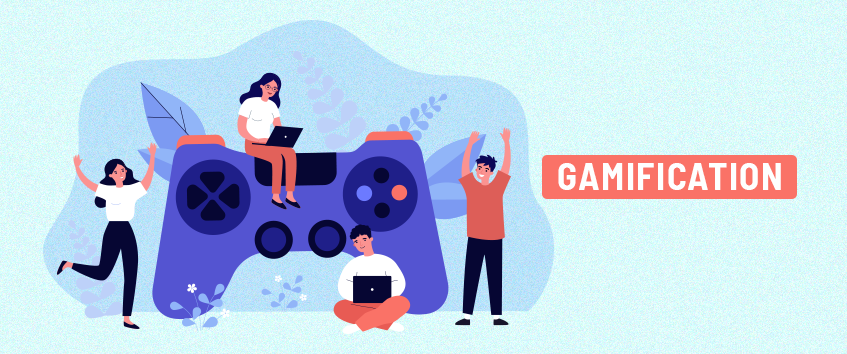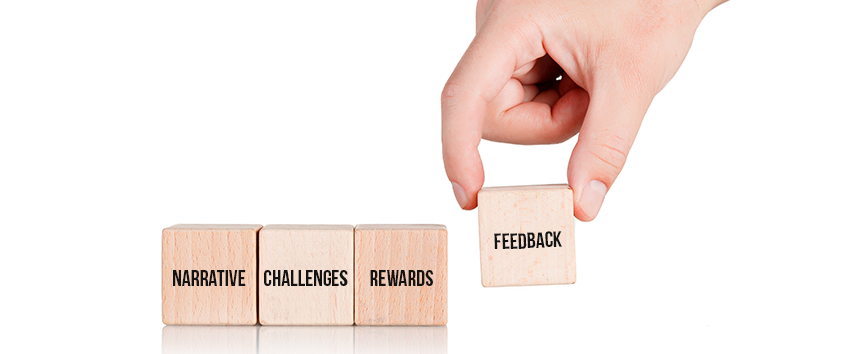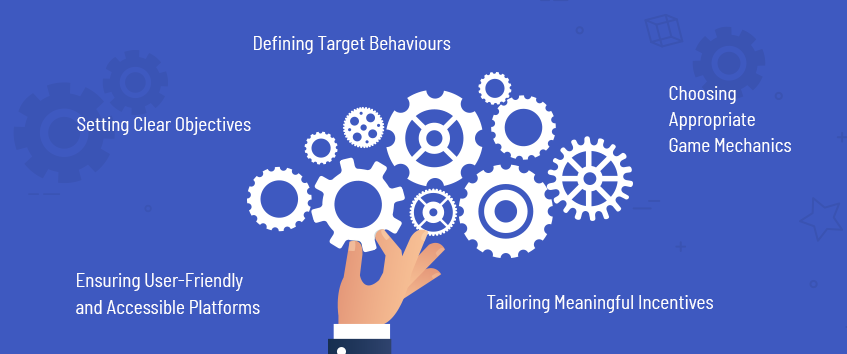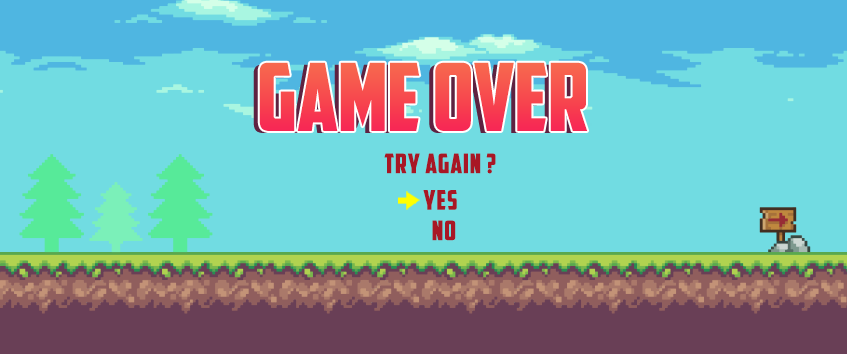Game On: Transforming Customer Engagement with Gamification
March 22, 2024
The Game-Changing Impact of Gamification
The advent of gamification in the digital marketing landscape is nothing short of revolutionary. In an era characterized by an ever-increasing battle for customer attention, businesses are tirelessly innovating to stand out. Gamification, with its roots in game design and psychology, emerges as a formidable strategy, offering an unparalleled approach to customer engagement. This strategy does not just aim to attract attention; it seeks to transform the very fabric of customer interaction, making it more immersive, enjoyable, and ultimately, more effective.

Gamification leverages the fundamental human penchant for games and competition, integrating game mechanics into non-gaming environments. This innovative approach taps into the innate desires for achievement, reward, and recognition, driving customer engagement and participation. By embedding elements such as points, levels, challenges, and leader boards into digital platforms, businesses can create a captivating ecosystem that encourages continued interaction with their brand.
The impact of gamification on marketing strategies is profound. Traditional marketing techniques often focus on direct messages and calls to action, which, while effective to a degree, can become monotonous and easily ignored in a saturated digital environment. Gamification, on the other hand, introduces an element of fun and challenge, transforming passive consumption into active participation. This shift not only increases the time spent with the brand but also enhances the quality of the interaction, leading to deeper emotional connections and brand loyalty.
Moreover, gamification provides invaluable insights into customer behaviour and preferences. As users engage with gamified elements, they generate a wealth of data on their interactions, choices, and engagement levels. This data allows businesses to refine their marketing strategies, tailor their offerings, and create more personalized experiences that resonate with their audience. The result is a more dynamic and responsive marketing approach that evolves with the customer, ensuring relevance and appeal in a rapidly changing digital landscape.
Another significant advantage of gamification is its versatility. Regardless of the industry or target demographic, gamification can be customized to fit various contexts and objectives. From educational platforms looking to make learning more engaging to e-commerce sites aiming to increase sales through interactive challenges, the potential applications are vast. This flexibility makes gamification a valuable tool for businesses across the spectrum, capable of adapting to different goals and audiences.
The adoption of gamification also signals a shift towards more interactive and participatory brand experiences. In contrast to passive advertising, gamified marketing encourages users to take action, make decisions, and contribute to the narrative. This involvement creates a sense of ownership and investment in the brand, fostering a community of loyal customers and brand advocates. Furthermore, by offering rewards and recognition, businesses can incentivize continued engagement and participation, turning occasional users into regular customers. Let’s move on to know more about Gamification in today’s market.
Quick Dive into What Gamification Means for Today’s Marketers
Gamification has transcended the realm of mere gimmicks to become a core strategy in today’s marketing play book, especially for digital marketing companies striving to stand out in the competitive landscape of Kerala. It is an innovative approach that goes beyond the traditional methods of customer engagement by integrating elements of game design into non-game contexts. This strategy is not solely about incorporating points, leader boards, or badges into marketing activities. Instead, it focuses on crafting an immersive narrative that captivates the audience, thereby fostering continuous interaction and deepening their connection with the brand.

For marketers, leveraging gamification means tapping into the primal human instincts for competition, achievement, and recognition. By doing so, brands can create a more engaging and rewarding experience that not only attracts but also retains customers. This approach can transform mundane tasks into exciting challenges, making the customer’s journey with the brand more enjoyable and memorable. The effectiveness of gamification lies in its ability to motivate participation through rewards, challenges, and interactive storytelling, thereby turning ordinary brand interactions into captivating experiences.
In the context of Kerala’s dynamic digital marketing landscape, the introduction of gamification by a digital marketing agency in Kerala presents a distinctive opportunity for brands to stand out. The region’s diverse and technology-savvy population is constantly seeking innovative and captivating experiences. By incorporating gamified components into their marketing strategies, companies can boost customer engagement, strengthen brand loyalty, and escalate user involvement. This is especially crucial in a digital era where consumer attention spans are limited, and the battle for their engagement is intense.
Moreover, gamification allows marketers to gather valuable data on consumer behaviour and preferences, enabling them to tailor their offerings more effectively. As consumers interact with gamified elements, they leave behind a trail of data that can be analysed to improve future marketing strategies and personalize the user experience further.
The Foundation: Building Blocks of a Winning Gamification Strategy
In the dynamic world of digital marketing, the implementation of a gamification strategy stands as a revolutionary approach to deeply engage customers and enhance brand loyalty. For a digital marketing company based in Kerala, where competition is fierce and the audience is increasingly tech-savvy, adopting a well-crafted gamification strategy can set a brand apart, creating memorable experiences that resonate on a personal level with its audience. This strategy, at its core, must be a seamless extension of the brand’s identity and objectives, ensuring that every game-like element introduced not only entertains but also amplifies the brand’s message and goals.

The foundation of a winning gamification strategy involves a few critical elements that, when combined, create an irresistible draw for the target audience and they are;
1. Narrative: A compelling narrative is paramount; it serves as the backdrop against which customers interact with your brand, ensuring that every challenge faced and every milestone reached is part of a larger, engaging story. This narrative should be more than just entertaining; it should reflect the brand’s ethos and speak directly to the audience’s desires and needs.
2. Challenges: Achievable challenges are another cornerstone. These challenges should be designed not just for the sake of engagement but to motivate participants to push their boundaries while still ensuring the goals are within their reach. This delicate balance between difficulty and achievability keeps participants engaged and prevents frustration.
3. Rewards: They play a critical role in any gamification strategy. However, the rewards must offer real value to the participants, whether through exclusive offers, recognition, or tangible gifts. These rewards should be directly linked to the achievements within the game, thereby enhancing the sense of accomplishment and satisfaction.
4. Feedback: Feedback mechanisms are essential. They guide participants through the game, offering encouragement and adjustments based on performance. This constant interaction fosters a deeper connection between the customer and the brand, as it shows the company’s commitment to the participant’s experience and success.
Crafting a gamified experience that aligns with these principles can dramatically transform customer engagement. By integrating a well-thought-out gamification strategy, a digital marketing company in Kerala can not only captivate its audience but also foster a community of brand advocates, driving both engagement and loyalty to new heights.
Play to Win: Implementing Effective Gamification Tactics
Implementing effective gamification tactics within your marketing or user engagement strategies can significantly enhance the overall user experience, fostering higher levels of interaction and loyalty. At the heart of a successful gamified campaign lies the intricate process of planning and execution, which, when done correctly, can yield outstanding results. Here’s a detailed guide on how to develop and launch an engaging gamified campaign.

1. Setting Clear Objectives: The first step in any gamified campaign is to identify what you aim to achieve. Clear objectives not only provide direction but also help in measuring the success of the campaign. Whether it’s increasing user engagement, boosting sales, or enhancing learning outcomes, having well-defined goals is crucial.
2. Defining Target Behaviours: Once objectives are set, it’s essential to pinpoint the behaviours you want to encourage among your users. This could range from simple actions like logging in daily to more complex interactions like completing a set of tasks or challenges.
3. Choosing Appropriate Game Mechanics: The core of gamification lies in its game mechanics. Selecting the right mix of elements such as points, badges, leader boards, challenges, and rewards is vital. These mechanics should align with the campaign’s objectives and be capable of motivating the target behaviours.
4. Ensuring User-Friendly and Accessible Platforms: The success of a gamified campaign also heavily depends on its platform’s usability and accessibility. A user-friendly design ensures that participants find the experience enjoyable and engaging, which in turn, increases their likelihood of continual engagement and participation.
5. Tailoring Meaningful Incentives: Incentives are the driving force behind user participation in gamified campaigns. It’s important to offer rewards that are meaningful and desirable to the target audience. These incentives should resonate with their preferences and interests, providing them with enough motivation to participate actively and achieve the set objectives.
By meticulously planning and implementing these steps, businesses can create gamified campaigns that not only engage and entertain users but also achieve tangible outcomes. Through effective gamification tactics, brands can foster a deeper connection with their audience, encouraging loyalty and promoting positive behaviours in a fun and interactive way.
Game Over? The Ongoing Journey of Gamified Marketing
The realm of gamified marketing is a fascinating landscape, constantly evolving and adapting to the ever-changing desires and expectations of consumers. In an age where engagement is the currency of the digital world, gamification has emerged as a formidable strategy to capture the attention and loyalty of audiences worldwide. However, as we journey deeper into the digital age, the question arises: Is the era of gamified marketing nearing its end, or is it merely on the brink of a new evolution?

Gamification, the integration of game mechanics into non-game environments to promote engagement and participation, has proven to be a powerful tool in the marketer’s arsenal. From simple loyalty programs incentivise repeat purchases to complex virtual experiences that immerse users in brand narratives, gamification has diversified the ways in which brands can interact with their customers. Yet, the dynamic nature of consumer expectations means that the gamification strategies of yesterday might not hold the same allure today. This begs the question:
How can gamified marketing continue to captivate and retain consumers in a saturated digital landscape?
The Imperative of Continuous Improvement
The key to sustaining the efficacy of gamified marketing lies in its ability to evolve. Like any digital strategy, gamification must not stagnate. Continuous improvement is essential, requiring marketers to regularly assess and refine their gamification elements. This process involves soliciting feedback from users, analysing engagement metrics, and identifying areas for enhancement or innovation. By staying committed to this cycle of evaluation and improvement, marketers can ensure that their gamified experiences remain fresh, relevant, and, most importantly, engaging.
Staying Ahead of Technological Advancements
Technological advancements are continuously reshaping the digital marketing landscape, offering new tools and platforms for creating immersive gamified experiences. Virtual Reality (VR), Augmented Reality (AR), and Artificial Intelligence (AI) are just a few examples of technologies that have the potential to elevate gamification to new heights. By incorporating these cutting-edge technologies into their strategies, marketers can create more interactive and personalized experiences that captivate users in unprecedented ways. However, leveraging these technologies requires marketers to remain abreast of the latest developments and understand how they can be applied effectively within their gamified frameworks.
Innovation: The Heart of Gamification
Innovation is the lifeblood of gamified marketing. It’s what transforms a routine interaction into a memorable experience that strengthens the customer-brand relationship. Innovating within gamification means thinking beyond points and badges to create meaningful, impactful experiences that resonate with audiences on a deeper level. It involves exploring new game mechanics, narrative techniques, and engagement strategies that can surprise and delight users. By fostering a culture of creativity and experimentation, marketers can continually push the boundaries of what gamified marketing can achieve.
The Journey Continues
Far from signalling a game over, the ongoing journey of gamified marketing is an exciting testament to the adaptability and resilience of this strategy. As long as marketers are willing to embrace continuous improvement, stay ahead of technological advancements, and prioritize innovation, gamified marketing will continue to thrive. The future of gamified marketing is not just about playing games—it’s about creating value, building relationships, and delivering unforgettable experiences that keep customers coming back for more. In this ever-evolving digital landscape, the game is very much on.

As we move forward, the challenge for marketers will be to creatively integrate these technologies into their gamification strategies, ensuring that they not only captivate but also resonate with their target audiences. The evolution of gamification in marketing is set to redefine the boundaries of brand engagement, making it an exciting time for innovation, creativity, and strategic foresight.
As a pioneering digital marketing company in Kochi, Kerala, we understand the power of gamification in transforming customer engagement. The journey of gamified marketing is an exciting one, filled with endless possibilities for innovation and engagement. By staying ahead of the curve and embracing the future of gamification, we can ensure that our marketing strategies remain not only effective but also genuinely engaging and competitive in the rapidly evolving digital landscape.
